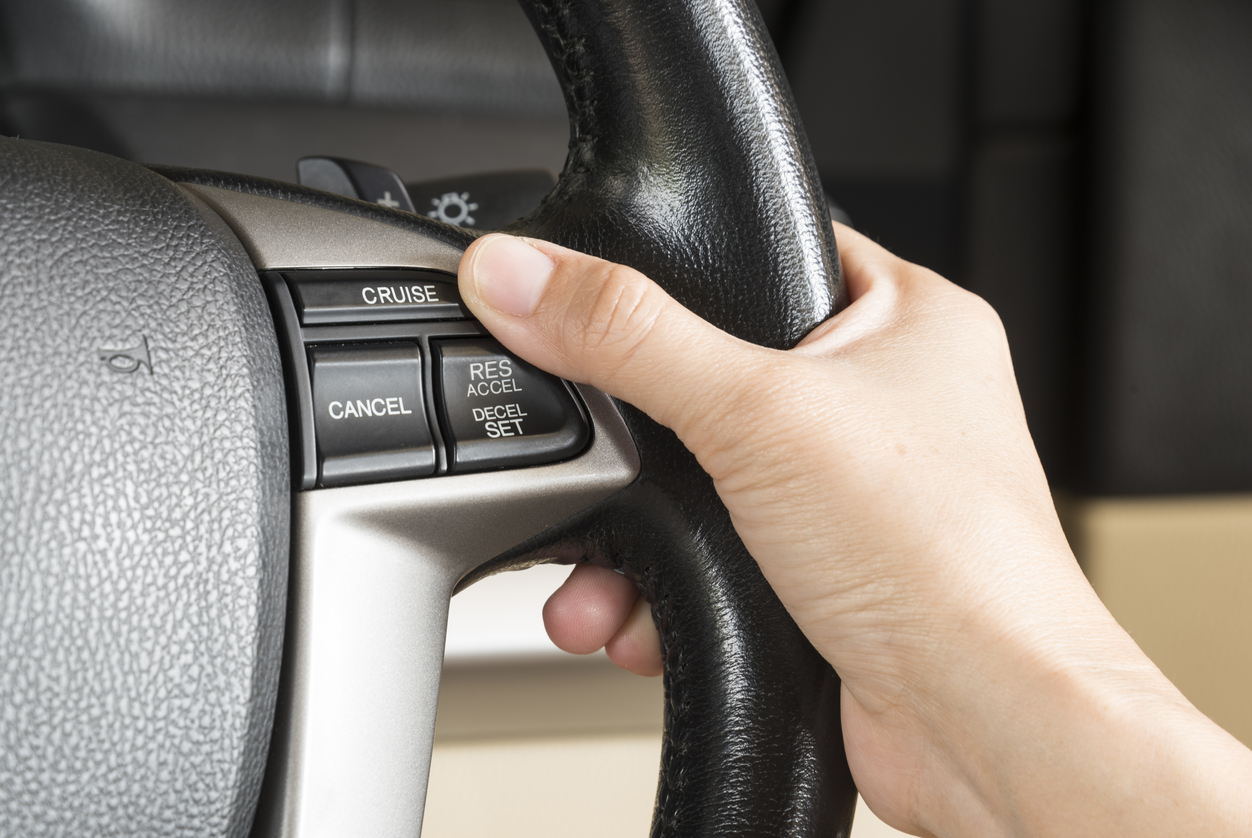
We are all familiar with cruise control, that setting on your steering wheel or dashboard that makes it easy to just set the speed you want to drive at and just monitor speed instead of actively using the pedal to adjust your speed.
But how does Cruise Control actually help you?..
First, by setting the speed for it (for example while driving on the highway) at the officially posted speed limit, it can help you avoid getting costly speeding tickets and incurring other fees that may come with that – fees such as potential traffic school tuition/dues, higher insurance rates, etc.
Second, applying cruise control can help improve your vehicle’s gas mileage. Statistics show that dropping your speed on the highway from 70 mph to 60 mph increases fuel efficiency by a factor of 17.2%.
However, there are definitely times when you should not use cruise control, specifically for safety reasons. Police recommend to not use cruise control under the following conditions:
– On winding roads, during heavy traffic periods or on a bridge/overpass
– On icy roads or during downpours/hailstorms
– On any kind of slippery road conditions or during or after the first rainstorm of the season.
– Late at night or when you are tired.
If you are on a particularly slippery road, there is the very real danger of hydroplaning. This would not be an appropriate time to use cruise control. Also, when you are tired, removing the engagement of actively using the gas pedal can potentially lead you to completely lose focus on what you are doing, resulting in an accident.
More recently, cars have been coming out with an updated version of cruise control called “adaptive cruise control”. This feature allows you to set a recommended speed, but the system will adapt to traffic conditions, keeping you at a safe distance and speed.
Have any further questions about your vehicle’s steering system? Give our ASE-certified technicians a call at 262.968.3324!
 MENU
MENU